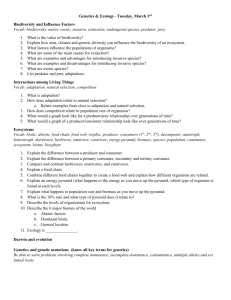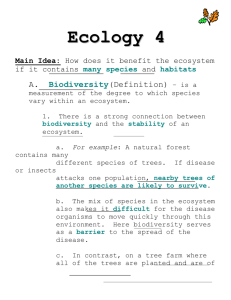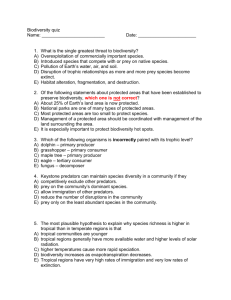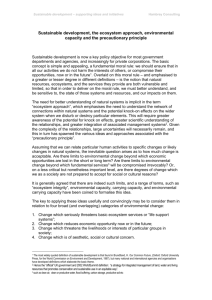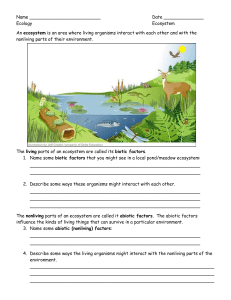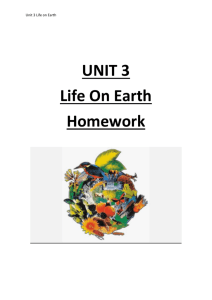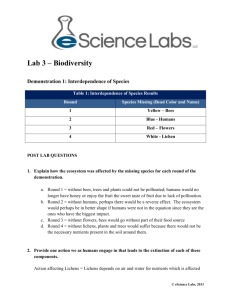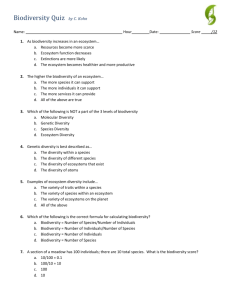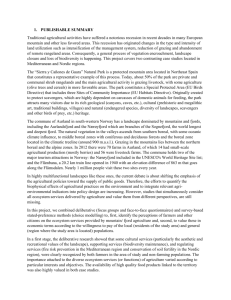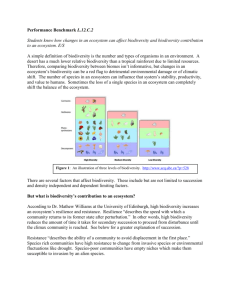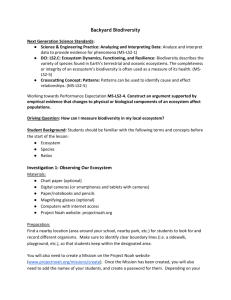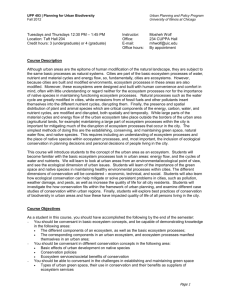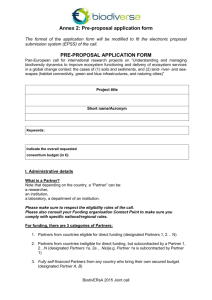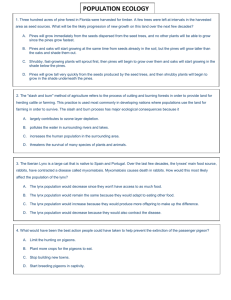SNC1D Sustainable Ecosystems Unit Review
advertisement
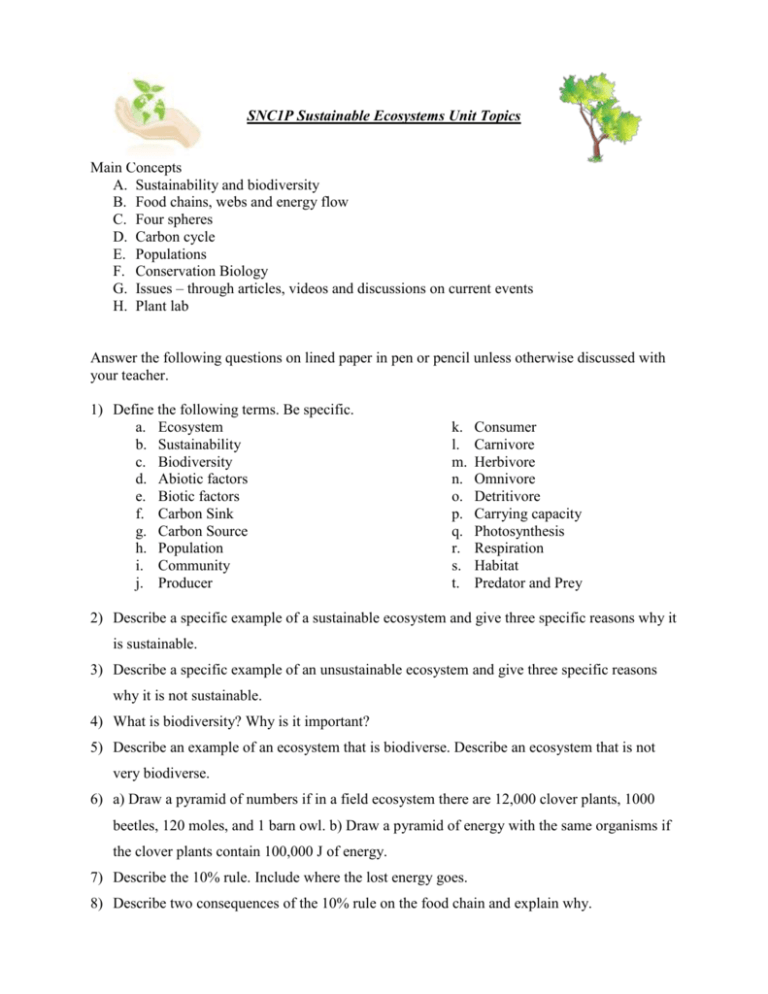
SNC1P Sustainable Ecosystems Unit Topics Main Concepts A. Sustainability and biodiversity B. Food chains, webs and energy flow C. Four spheres D. Carbon cycle E. Populations F. Conservation Biology G. Issues – through articles, videos and discussions on current events H. Plant lab Answer the following questions on lined paper in pen or pencil unless otherwise discussed with your teacher. 1) Define the following terms. Be specific. a. Ecosystem b. Sustainability c. Biodiversity d. Abiotic factors e. Biotic factors f. Carbon Sink g. Carbon Source h. Population i. Community j. Producer k. l. m. n. o. p. q. r. s. t. Consumer Carnivore Herbivore Omnivore Detritivore Carrying capacity Photosynthesis Respiration Habitat Predator and Prey 2) Describe a specific example of a sustainable ecosystem and give three specific reasons why it is sustainable. 3) Describe a specific example of an unsustainable ecosystem and give three specific reasons why it is not sustainable. 4) What is biodiversity? Why is it important? 5) Describe an example of an ecosystem that is biodiverse. Describe an ecosystem that is not very biodiverse. 6) a) Draw a pyramid of numbers if in a field ecosystem there are 12,000 clover plants, 1000 beetles, 120 moles, and 1 barn owl. b) Draw a pyramid of energy with the same organisms if the clover plants contain 100,000 J of energy. 7) Describe the 10% rule. Include where the lost energy goes. 8) Describe two consequences of the 10% rule on the food chain and explain why. 9) A) Draw the food chain of an ecosystem that contains Northern cod, shrimp, seal, algae, and polar bears. Label each trophic level, the producers and consumer (primary to quaternary) B) If the fish were over harvested and their population numbers crashed, describe how this human impact would affect two other species in the food chain. 10) In the western world our diet contains much more meat than most eastern diets. How is our diet more demanding on our agricultural resources? What could you do at home to reduce your demand on our resources. (see the 10% rule homework reading) 11) List five processes of the carbon cycle. List the 4 carbon sinks. 12) Draw a diagram of the Carbon cycle including labels for the 5 processes and the four sinks. 13) Describe two ways humans affect the carbon cycle (hint: think of your diagram). 14) What are the four spheres of the Earth? Define each. 15) Choose two of the four spheres and describe one way humans have impacted them in a negative way. 16) Compare natality, immigration, mortality, and emigration. What do these have in common and how do they differ? 17) Describe four limiting factors that affect a population’s carrying capacity. 18) Describe the natural fluctuations of the predator and prey population relationship (discuss how their numbers change in relation to each other) (see Elk Wolves Population Case Study). 19) Describe how a prey population may be healthier if it has predators. If there are no predators what will limit the prey population? 20) What is conservation biology? What is the purpose of this field of science? 21) What are the four major threats to biodiversity? Describe each threat in detail. 22) What are some methods scientists use to study biodiversity (this was covered in the biodiversity centres) 23) What is one Species at Risk in our local area? Describe why this species is at risk and what can be done to protect the species. 24) Explain in detail how Zebra Mussels came to be an introduced species in the great lakes. 25) Describe what has happened to the Lake Sturgeon population in Ontario waterways.



